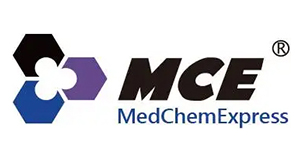T0901317, CAS 293754-55-9
T0901317, CAS 293754-55-9
SKU
MEXHY-10626-10.1
Packaging Unit
10 mM/1 ml
Manufacturer
MedChemExpress
Availability:
loading...
Price is loading...
Product Description: T0901317 is an orally active and highly selective LXR agonist with an EC50 of 20 nM for LXRα[1]. T0901317 activates FXR with an EC50 of 5 μM[2]. T0901317 is RORα and RORγ dual inverse agonist with Ki values of 132 nM and 51 nM, respectively[3]. T0901317 induces apoptosis and inhibits the development of atherosclerosis in low-density lipoprotein (LDL) receptor-deficient mice[4][5].
Applications: Cancer-programmed cell death
Formula: C17H12F9NO3S
References: [1]J R Schultz, et al. Role of LXRs in Control of Lipogenesis. Genes Dev. 2000 Nov 15;14(22):2831-8./[2]Rough JJ, et al. Anti-proliferative effect of LXR agonist T0901317 in ovarian carcinoma cells. J Ovarian Res. 2010 May 26;3:13./[3]Todd G Kirchgessner, et al. Beneficial and Adverse Effects of an LXR Agonist on Human Lipid and Lipoprotein Metabolism and Circulating Neutrophils. Cell Metab. 2016 Aug 9;24(2):223-33./[4]Keith A Houck, et al. T0901317 Is a Dual LXR/FXR Agonist. Mol Genet Metab. Sep-Oct 2004;83(1-2):184-7./[5]Naresh Kumar, et al. The Benzenesulfoamide T0901317 [N-(2,2,2-trifluoroethyl)-N-[4-[2,2,2-trifluoro-1-hydroxy-1-(trifluoromethyl)ethyl]phenyl]-benzenesulfonamide] Is a Novel Retinoic Acid Receptor-Related Orphan Receptor-Alpha/Gamma Inverse Agonist. Mol Pharmacol. 2010 Feb;77(2):228-36./[6]Mingming Gao, et al. The Liver X Receptor Agonist T0901317 Protects Mice From High Fat Diet-Induced Obesity and Insulin Resistance. AAPS J. 2013 Jan;15(1):258-66.
CAS Number: 293754-55-9
Molecular Weight: 481.33
Compound Purity: 99.93
Research Area: Cancer; Metabolic Disease; Cardiovascular Disease
Solubility: DMSO : 100 mg/mL (ultrasonic)/Ethanol : 100 mg/mL (ultrasonic)
Target: Apoptosis;FXR;LXR;ROR
Applications: Cancer-programmed cell death
Formula: C17H12F9NO3S
References: [1]J R Schultz, et al. Role of LXRs in Control of Lipogenesis. Genes Dev. 2000 Nov 15;14(22):2831-8./[2]Rough JJ, et al. Anti-proliferative effect of LXR agonist T0901317 in ovarian carcinoma cells. J Ovarian Res. 2010 May 26;3:13./[3]Todd G Kirchgessner, et al. Beneficial and Adverse Effects of an LXR Agonist on Human Lipid and Lipoprotein Metabolism and Circulating Neutrophils. Cell Metab. 2016 Aug 9;24(2):223-33./[4]Keith A Houck, et al. T0901317 Is a Dual LXR/FXR Agonist. Mol Genet Metab. Sep-Oct 2004;83(1-2):184-7./[5]Naresh Kumar, et al. The Benzenesulfoamide T0901317 [N-(2,2,2-trifluoroethyl)-N-[4-[2,2,2-trifluoro-1-hydroxy-1-(trifluoromethyl)ethyl]phenyl]-benzenesulfonamide] Is a Novel Retinoic Acid Receptor-Related Orphan Receptor-Alpha/Gamma Inverse Agonist. Mol Pharmacol. 2010 Feb;77(2):228-36./[6]Mingming Gao, et al. The Liver X Receptor Agonist T0901317 Protects Mice From High Fat Diet-Induced Obesity and Insulin Resistance. AAPS J. 2013 Jan;15(1):258-66.
CAS Number: 293754-55-9
Molecular Weight: 481.33
Compound Purity: 99.93
Research Area: Cancer; Metabolic Disease; Cardiovascular Disease
Solubility: DMSO : 100 mg/mL (ultrasonic)/Ethanol : 100 mg/mL (ultrasonic)
Target: Apoptosis;FXR;LXR;ROR

 Deutsch
Deutsch










